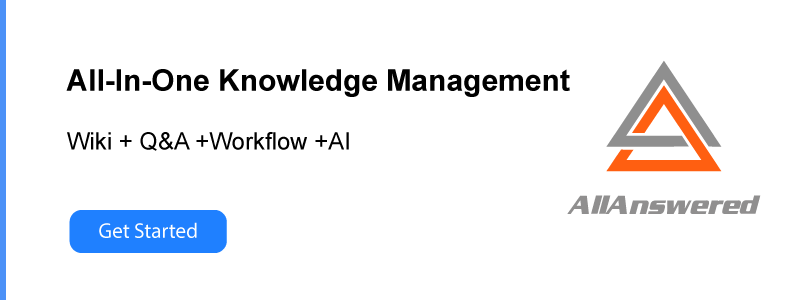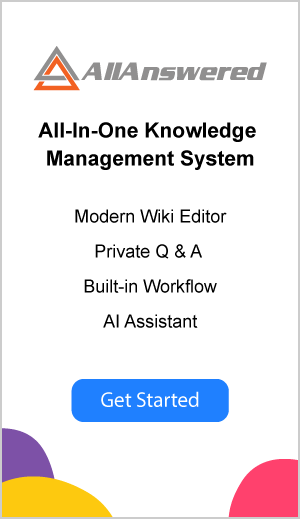Defining Sales Asset Management and Sales Enablement, and Why Your Business Needs Both
About Sales Asset Management
Sales Asset Management (SAM) is vital to the productivity of sales representatives. But what is it?
When a sales professional connects with a prospect, they are probably sharing visual assets like images and presentations to earn the close. But where do these materials come from, and how do they know when this content should be used, and how? Is the content even up-to-date? Is it effective?
Content marketing is not part of a sales professional's job description, but knowing how and when to use sales-specific content is part of their job. That's why your business needs a SAM solution.
A sales asset management solution can help your organization if –
- You're not storing your sales-specific content in one central place. If your content is stored in a number of locations, you probably have duplicate content. A SAM will reduce errors and redundancy and ensure easy access by centralizing sales content.
- You struggle to find the content you need. Statistics show that sales representatives are spending approximately 30 hours each month either creating their own content or searching for content. This means your productivity is taking a massive hit. You shouldn't be searching; you should be selling. A SAM solution will free up your time to do what you do best.
- Your content is irrelevant or out-of-date. Content must be reviewed and updated on a regular basis, ensuring your prospects only have access to relevant material. Sales content should ideally be reviewed on a monthly, perhaps quarterly, basis for updates, with new versions made available to sales representatives.
- You're on the road and can't access sales-specific content. When you're connecting with prospects, you must be able to access and share relevant content from any device while outside the office. It can be very helpful to have access to a mobile-friendly version of your pitch deck.
Why Your Organisation Needs a Sales Asset Management (SAM) Solution
Marketing and sales are two separate disciplines. Marketers produce content – reusable, broadly focused, and high-performing content. On the other hand, salespeople are required to hold conversations that are specific, unique, and pointed.
We often see SAM solutions being defined as sales enablement platforms, but content is not the only factor that helps sales representatives perform their duties. It therefore stands to reason that content and sales problems are not the same, so how does that affect sales enablement?
Defining The Role Of Sales Asset Management (SAM)
The objective behind both sales and marketing is the same, and that's to drive revenue; however, each discipline has a different tactic. Marketing could be described as casting a wide net, with part of that net being sales-specific content; while sales is about a series of individual conversations. A content management (SAM) solution is required because marketers have a divided focus. Content creators need insight into how content is being used, and who's using it.
When an organization has an effective SAM solution, the marketing team has a clear insight into their content. While it's important to know what's being used at an individual level, it's also extremely valuable to have the ability to observe the correlational data trends. Let's say you have a great engagement level with a 42% open rate on an asset; the question still remains – what's the correlating deal closure rate? Perhaps there's an asset that's creating more queries than it answers. Is your sales cycle slowing down? Is the asset you're using to influence prospects typically enterprise or SMB's?
It may sound counterintuitive, but the role of SAM must be about enhancing the performance of the marketing department, ensuring it can move fast and remain responsive to altering trends.
If your SAM solution fails to provide useful insights into how your content is working at every level, in such a way that your marketing team are empowered to deliver better performing sales content, then your assets will become fragmented. And as a whole it will be harmful to your marketing and sales organizations.
Defining The Role Of Sales Enablement
The role of sales enablement is to create more effective salespeople, and while content is certainly a part of that, it's just a small part. Being able to access the right collateral at the appropriate time can certainly make a difference post-conversation, but does it help the conversation itself? What about competitive research, objection handling, bringing a new sales representative up to speed on product features, and the best way to deliver them?
As you can see, a real sales enablement solution is basically about creating better salespeople, and while content is part of the sales representatives' job, it doesn't define it. Sales is not about content – it's all about conversations. Your sales reps must be empowered to engage in productive conversations, which also means generating revenue.
What defines an effective salesperson? It's the preparation time, being able to respond to an objection in real time, knowing what has and hasn't worked for your colleagues - it's about knowledge. It's about giving your sales organization the knowledge they require to improve rates and grow revenue. These are the things that SAM and marketing solutions can't provide.
Why Are Salespeople Necessary If Content Alone Wins Deals?
Unfortunately, some SAM vendors deliberately create confusion between what sales enablement really is and what they actually do, and that's because it's a lucrative business. Over the past few years there's been a dramatic increase in sales enablement platforms on the market. Studies show that 19.2% of businesses in 2013 had a sales enablement program/person/function set in place, but in 2018 that figure had dramatically increased to 59.2%
So, if a vendor only talks about content but tells you they do sales enablement, they're actually talking about sales asset management (SAM). You can't change the fact that good content can enhance a good conversation, but it definitely can't replace it. If it could replace it, sales enablement wouldn't mean giving salespeople what they require to reduce sales cycles, improve average selling price, and make quota. Instead, an artificial intelligence tool would algorithmically identify high performing content and send it out.
Americans are certainly not ready to see AI replacing salespeople. Technologically we're not there yet, but more importantly, 71% of people state they would rather interact with a human than any type of automated process.
For marketers, content is king, but the key to sales is conversations. While a smart customized deck can certainly be a great conversation starter, on its own, it won't win a deal. If the focus is solely on content, and the contextual knowledge that's a vital part of selling is excluded, then you're not setting your sales reps up for success. You're actually saying that marketing knows best - but we now know that marketers have a different focus.
Recognizing Both Content and Knowledge
There are always going to be issues when revenue teams are developing their businesses, but your sales enablement tech stack should not become one of those issues. Both sales and marketing require solutions designed to not only serve their needs, but allows them to hit and then expand their targets.
Both knowledge and content are integral to business growth, and when you provide each group with their own best-fit platform, you're also promoting a good working relationship between the two. If you give these two groups the tools and space they need, your business will thrive.








